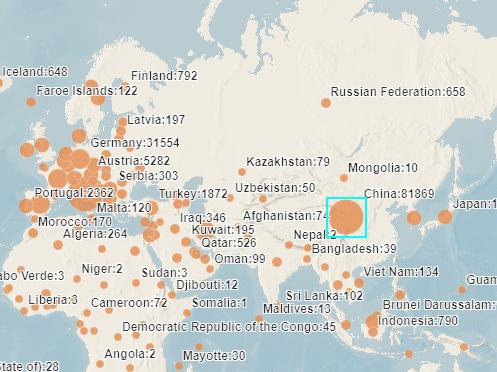
WHO dashboard for COVID-19
By Denis McClean
GENEVA - A serious shortage of medical resources was one of the main challenges which China had to overcome to stabilize the COVID19 outbreak in Wuhan, Hubei, where a mortality rate of 4.7% was recorded compared with 0.9% in the country’s 30 other provinces.
Since the first case was confirmed on December 31, 2019, China has had 81,960 confirmed cases as of today, including 3,293 people who died and 74,196 people who were cured. The country has also had 541 imported cases. The national mortality rate is about 4%.
As many other countries have also realized, "medical supplies are highly critical to control the mortality rate," said Prof. Saini Yang, Director, International Centre for Collaborative Research on Disaster Risk Reduction, Beijing Normal University.
She was speaking at a second webinar organized this week by UNDRR’s Global Education and Training Institute, and WHO, which focused on lessons learned from China’s experience of the pandemic following an earlier one which focused on lessons from South Korea. Over 1,300 health and disaster management experts from over 150 countries registered for the two webinars.
Earlier this month, WHO Representative in China, Dr. Gauden Galea recognised China’s efforts at containment.
“It is an epidemic that has been nipped as it was growing and stopped in its tracks. This is very clear from the data that we have, as well as the observations that we can see in society in general. So that's a big lesson: that the natural course of the outbreak does not need to be a very high peak that overwhelms health services. This lesson in containment, therefore, is a lesson that other countries can learn from and adapt for their own circumstances," he told UN News.
Prof. Yang attributed the fast spread of the coronavirus in Wuhan to the fact that it is located in the centre of China and there is high population density with 15 million people living there. Among them are many vulnerable groups including 14% of the population aged over 65 years.